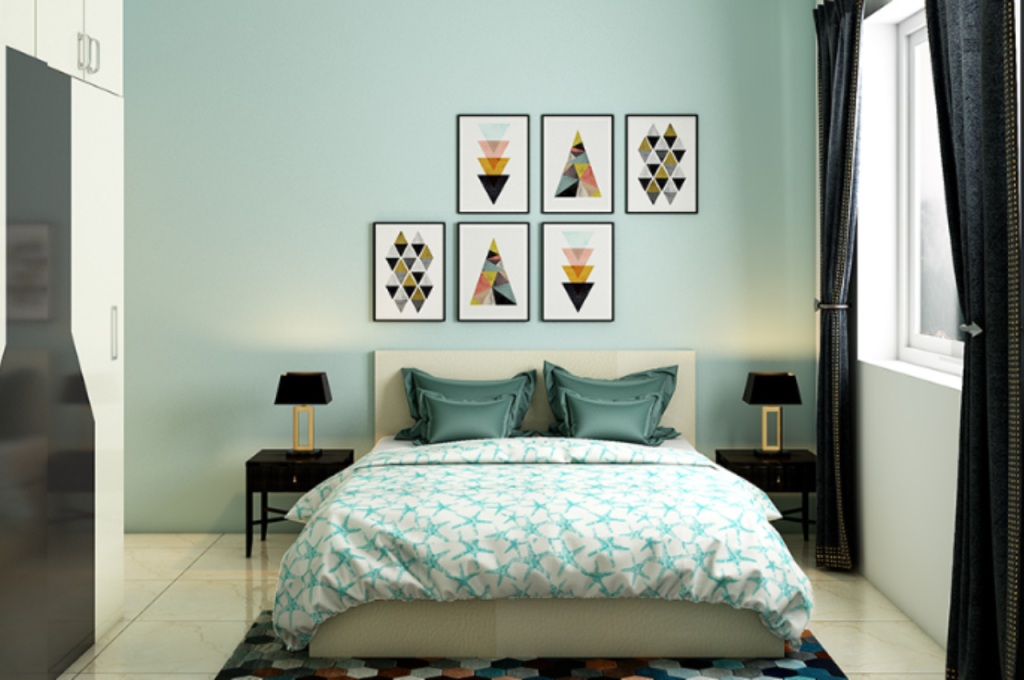Painting is both a skill and a hobby, requiring talent and practice. Whether you paint professionally or for fun, it’s a rewarding creative outlet.
Engaging in painting allows you to express yourself, relieve stress, and explore your artistic abilities. Many people find joy in experimenting with different techniques, mediums, and styles when painting. Whether you are a beginner or an experienced artist, painting can be a fulfilling activity that brings beauty and inspiration into your life.
Embrace the process of creating art on canvas or paper, and let your imagination flow freely as you explore the world of painting.
Skill vs. Hobby
Contemplating whether painting qualifies as a skill or merely a hobby? Delving into this discussion unravels the complexities and nuances of the art of painting. Exploring both perspectives sheds light on the multifaceted nature of painting and its significance in both artistic expression and recreational pursuits. Let’s delve into the debate of skill versus hobby in the art of painting.

Artistic Proficiency
Some consider painting a skill due to the mastery required to express creativity on canvas, while others view it simply as a relaxing hobby.
Historical Perspective
The historical perspective of painting sheds light on its evolution and its pivotal role in artistic development throughout the ages. From ancient cave paintings to Renaissance masterpieces and contemporary art movements, the history of painting reflects humanity’s cultural, social, and technological advancements.
Evolution of Painting
From early cave drawings to modern masterpieces, the evolution of painting has showcased human creativity.
Role in Artistic Development
Painting has played a central role in shaping the artistic development of societies worldwide.
Cultural Influence
When it comes to the influence of different cultures on painting as a skill or hobby, it’s essential to consider how this art form has evolved and impacted societies across the globe.
Painting in Different Cultures
In ancient China, painting was not only a skill but also a spiritual practice, deeply rooted in Confucian and Taoist philosophies. The emphasis was on harmony, balance, and expressing the interconnectedness of nature and humanity through art.
In the European Renaissance, painting was seen as a prestigious skill, often serving as a medium for religious and mythological narratives. Artists like Leonardo da Vinci and Michelangelo elevated the status of painting as a highly esteemed profession.
Indigenous African art has a rich tradition of paintings that are a blend of ritualistic and symbolic representations. These intricate artworks reflect various aspects of tribal culture, spirituality, and daily life, showcasing the diversity and historical significance of painting among different African communities.
Impact On Society
The rich history and diverse cultural backgrounds of painting have significantly shaped societies worldwide. The presence of paintings in various cultures has served as a means of preserving and communicating cultural heritage and traditions across generations.
Painting has also provided a platform for social commentary, activism, and political expression. Throughout history, artists have utilized their skills to convey powerful messages about societal issues, bringing about awareness and change.
Psychological Benefits
Painting is not just a skill, but also a therapeutic hobby that offers various psychological benefits. It allows individuals to express emotions, reduce stress, enhance focus, and promote relaxation. Whether done professionally or as a leisure activity, painting can be a powerful tool for self-expression and mental well-being.
Therapeutic Value
Engaging in the art of painting can offer a range of psychological benefits that go beyond mere creative expression. The therapeutic value of painting is well documented, and many individuals have found solace, healing, and personal growth through this artistic medium. Whether you are a seasoned artist or a beginner dabbling in paint for the first time, the act of painting can have a profound impact on your mental well-being.
Enhancing Mental Well-being
Painting has the power to enhance mental well-being in various ways. When you immerse yourself in painting, you enter into a state of flow where time seems to stand still and your mind becomes completely absorbed in the present moment. This process of focusing your attention and concentration can help alleviate stress, anxiety, and depression.
Moreover, painting allows for self-expression in a non-verbal way, giving individuals a means to communicate their thoughts, emotions, and experiences that may be difficult to articulate verbally. Through the medium of paint, individuals can explore their inner world, release pent-up emotions, and gain a deeper understanding of themselves.
Additionally, the act of creating visual art activates the brain’s reward system, releasing dopamine, a neurotransmitter associated with pleasure and motivation. This release of dopamine can bring about feelings of joy and accomplishment, boosting self-esteem and self-confidence.
Incorporating painting into your routine can also provide an escape from the demands of everyday life. By stepping away from screens, work pressures, and other stressors, you are allowed to focus on the present, indulge in your creativity, and recharge your mental batteries.
Economic Significance
Painting can be both a skill and a hobby with economic significance. It requires creativity and technique, and talented painters can sell their artwork for profit. Whether pursued professionally or as a personal pastime, painting offers both artistic fulfillment and potential financial opportunities.

Art Market Dynamics
The art market is a dynamic and ever-changing landscape, with numerous factors influencing its trends and economic significance. Paintings, as a form of artistic expression, hold a distinct place in the art market. The value of a painting can vary greatly depending on factors such as the artist’s reputation, the rarity of the artwork, and the demand from collectors and art enthusiasts. In recent years, the art market has witnessed significant growth and globalization, opening up new opportunities for artists and investors alike.
Professional vs. Recreational Painting
When it comes to painting, it is essential to distinguish between professional and recreational pursuits. Professional painting refers to the work of skilled artists who make a living from selling their artwork. These artists invest years of practice and training to master their craft and develop a unique style. Professional painters often exhibit their work in galleries, participate in exhibitions, and have a wide network of collectors and buyers. They contribute to the economic significance of painting by generating revenue through the sale of their pieces.
On the other hand, recreational painting is primarily pursued as a hobby or a leisure activity. It encompasses a wide range of individuals, including beginners, art enthusiasts, and those who simply enjoy the process of creating art. While recreational painters may not engage with the art market on a professional level, their contributions should not be overlooked. These individuals participate in art classes, workshops, and painting communities, contributing to the overall demand for art supplies and resources. Their involvement adds vibrancy and diversity to the art scene, fostering a sense of creativity and cultural appreciation.
Artistic Value and Economic Impact
Painting, whether pursued professionally or recreationally, holds intrinsic artistic value. Art has the power to evoke emotions, challenge perspectives, and serve as a reflection of society. This artistic value extends beyond aesthetics; it also carries economic implications. The art market fuels economic growth by creating employment opportunities for artists, art dealers, curators, and other professionals within the industry. Moreover, it generates revenue from the sale of artwork, attracting investments and boosting local economies.
Additionally, the economic significance of painting extends to ancillary industries such as art supplies manufacturing, art galleries, art fairs, and art-related services. These sectors thrive due to the demand created by both professional and recreational painters. By investing in art materials, artists support the growth of the art supply market, contributing to job creation and innovation within the industry.
Education and Training
When it comes to the question of whether painting is a skill or a hobby, the role of education and training is a crucial aspect to consider. Both formal instruction and self-taught approaches can significantly influence an artist’s development and proficiency in painting. Let’s take a closer look at how education and training play a part in the debate about painting as a skill or hobby.
Formal Instruction
Formal instruction in painting provides a structured and comprehensive approach to learning the techniques, principles, and history of art. Many artists pursue formal education in fine arts, attending art schools, colleges, or universities to gain a strong foundation in painting. These programs offer courses in various mediums, color theory, composition, and art history, providing a well-rounded education for aspiring painters.
Self-taught Artists
On the flip side, some self-taught artists develop their painting skills through independent study, experimentation, and observation. These individuals often rely on resources such as books, online tutorials, workshops, and mentorship to refine their artistic abilities. While self-taught artists may not have formal academic credentials, their dedication and determination can lead to remarkable accomplishments in the world of painting.
Challenging the Norms
Challenging the Norms suggests exploring unconventional ideas and pushing the boundaries of traditional practices. It embodies a spirit of innovation, daring to defy established conventions and exploring new possibilities. In various fields, including art, science, and society, challenging norms involves questioning existing standards and seeking alternative approaches to address contemporary challenges.
Redefining Painting
Painting goes beyond traditional definitions. It’s about self-expression, creativity, and emotional release. From bold brushstrokes to intricate details, painting is a dynamic form of art that defies strict categorization.
Innovative Practices
Embracing technology and unconventional materials, artists are reshaping the painting landscape.
- Digital art: Using software and tablets to create stunning visuals.
- Mixed media: Combining paint with found objects for a unique touch.
Experimenting with styles and techniques keeps painting fresh and exciting.
Embracing Diverse Perspectives
Embracing diversity in home decor allows us to celebrate various cultures, styles, and perspectives, enriching our living spaces with unique and meaningful elements. In this article, we’ll explore the importance of incorporating diverse perspectives into home decor and how it can enhance the beauty and richness of our surroundings.

Blurring the Boundaries
Art is both a skill and a hobby, with boundaries blurring between the two.
- Painting requires skill, practice, and dedication.
- Individuals can enjoy painting as a fulfilling and relaxing hobby.
- Artistic expression can transcend traditional definitions.
Artists can straddle the line between painting for pleasure and developing their skills.
Celebrating Artistic Expression
Art appreciates diverse perspectives and forms of expression.
- Art allows for personal interpretation and creativity.
- Embracing different viewpoints enriches our understanding of art.
By celebrating the various ways people engage with painting, we honor individual experiences.
Conclusion
In the end, painting is both a skill and a hobby that brings joy and fulfillment. Whether you’re a beginner or a professional, the act of creating art stimulates the mind and soul. Embrace painting as an outlet for self-expression, relaxation, and personal growth.
Let your brushes and imagination lead the way.

